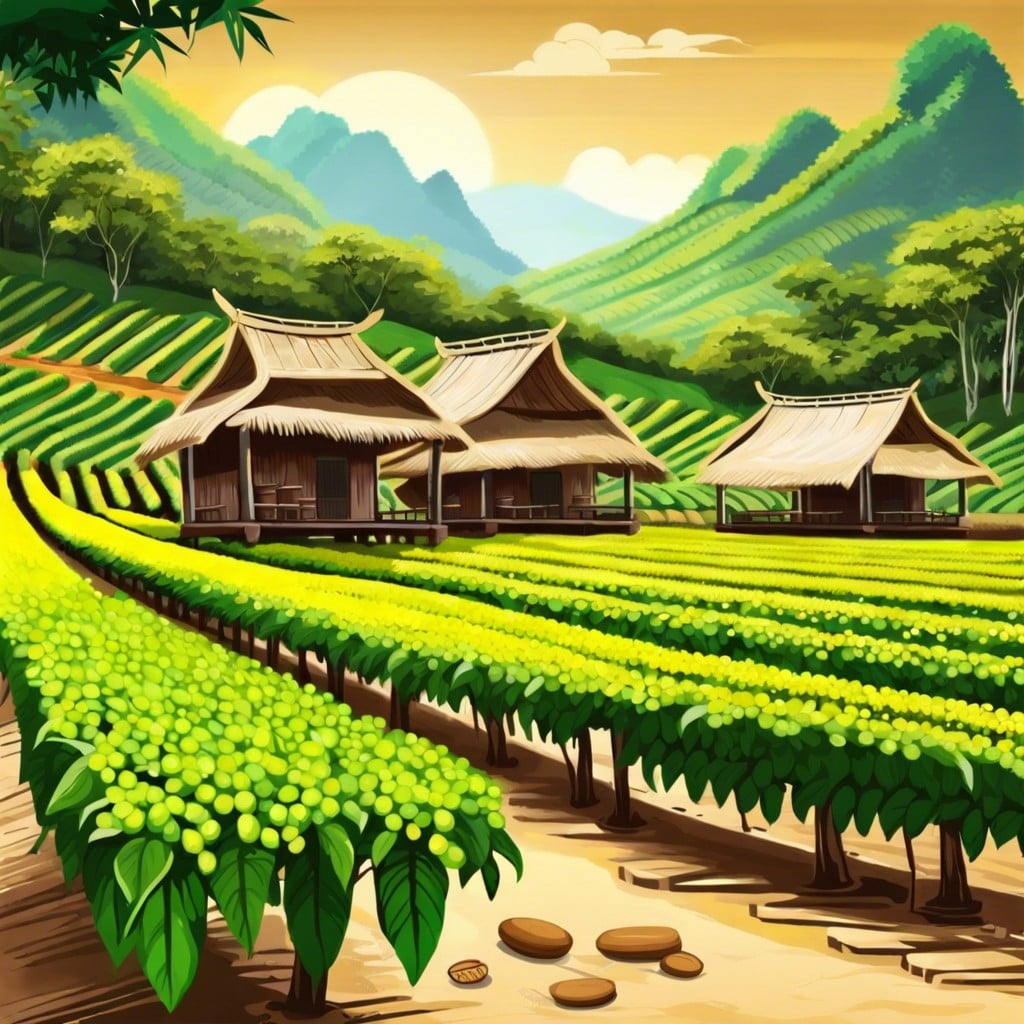Learn how to brew Vietnamese coffee using traditional techniques and ingredients.
History of Vietnamese Coffee

Vietnamese coffee traces its origins back to the mid-19th century when French colonists introduced coffee to Vietnam. The initial plantations flourished in the Annam region. Over time, the locals adapted their own style, incorporating robusta beans, which are bolder and more resilient than the commonly used arabica beans in other parts of the world.
As coffee grew in popularity, Vietnam evolved into one of the world’s leading coffee producers, with its distinct robusta variant setting it apart. The unique climate and fertile soil in regions like the Central Highlands provide ideal conditions for these robust beans, which are central to the strong flavors in Vietnamese coffee.
This rise in coffee cultivation coincided with the invention of uniquely Vietnamese brewing techniques and preparations, reflecting the country’s innovative spirit and culinary culture. These adaptations not only catered to local tastes but also added a new chapter to the global coffee narrative, fostering a vibrant coffee culture that resonates with both tradition and modernity.
Key Characteristics of Vietnamese Coffee
Vietnamese coffee is primarily robusta beans, known for their higher caffeine content and stronger, somewhat bitter flavor compared to the more common arabica beans. This robustness makes it ideal for the bold flavors associated with Vietnamese brews.
The coffee often undergoes a dark roast, which infuses it with a smoky, almost chocolatey taste that stands out even when mixed with sweetened condensed milk, a common pair in Vietnam’s signature coffee styles.
Another distinct feature is the brewing method using a phin, a small metal drip filter. This method emphasizes slow extraction, resulting in a rich, full-bodied cup. Perfectly marrying tradition and flavor, the phin method is a testament to the unhurried approach that characterizes the Vietnamese coffee experience.
Lastly, the inclusion of sweetened condensed milk not only adds a creamy texture but also balances the potent bitterness of the robusta beans, creating a harmonious blend that is both bold and sweet.
Traditional Vietnamese Coffee Brewing Methods
Vietnamese coffee is typically brewed using a phin, a small metal drip filter. This method is central to crafting the bold flavor profile characteristic of the brew. Here’s how the process generally unfolds:
First, finely ground coffee is placed into the phin, which sits atop a cup. Many opt for a dark roast, which echoes through the resulting drink. A moderate amount of hot water is then poured over the grounds, initiating the first drip.
This filter drip method is slow, allowing for a full extraction of flavors from the coffee grounds. Once the water has passed through the coffee and into the cup below—usually taking a few minutes—the coffee is ready to be enjoyed. This method not only preserves the coffee’s rich and intense flavors but also its deep aroma.
The preparation simplicity underscores the communal and unhurried approach taken towards coffee in Vietnam, making it a beloved ritual rather than a quick caffeine fix.
Recipe for Traditional Vietnamese Iced Coffee (Cà Phê Sữa Đá)
To brew a delightful cup of Cà Phê Sữa Đá, you’ll need a Vietnamese coffee press, dark roast coffee, sweetened condensed milk, and ice. Follow these steps:
- Add Coffee: ** Place 2 tablespoons of finely ground coffee into the coffee press.
- Condensed Milk: ** Pour 2 tablespoons of sweetened condensed milk into a glass.
- Brew: ** Place the coffee press over the glass and pour 2 ounces of boiling water into the press. Let the coffee drip slowly into the glass. This should take about 3-5 minutes.
- Stir and Ice: ** Once the coffee has fully dripped, stir well to mix the coffee with the condensed milk. Fill the glass with ice and stir again to chill.
This method will yield a strong yet creamy beverage, capturing the essence of a true Vietnamese coffee experience.
Vietnamese Coffee Culture and Its Global Influence
Vietnamese coffee culture goes beyond the drink itself: it’s a social ritual. Sidewalk cafés spill over with friends and strangers alike, bonding over their shared love for strong coffee. This tradition has cemented Vietnam as a communal hub for coffee enthusiasts.
Internationally, Vietnamese coffee has carved out a niche. Its distinct style and taste have attracted coffee lovers worldwide, influencing cafes from the U.S. to Australia. Many have adopted Vietnam’s signature robusta beans and condensed milk concoction, introducing it to global palates.
Coffee shops globally now offer Vietnamese coffee not only as a specialty item but as a sensorial experience. This international recognition has led to a budding interest in other aspects of Vietnamese culinary and cultural heritage. The rise of social media has turbocharged its global spread, enabling Vietnamese coffee to become a symbol of cultural exchange.